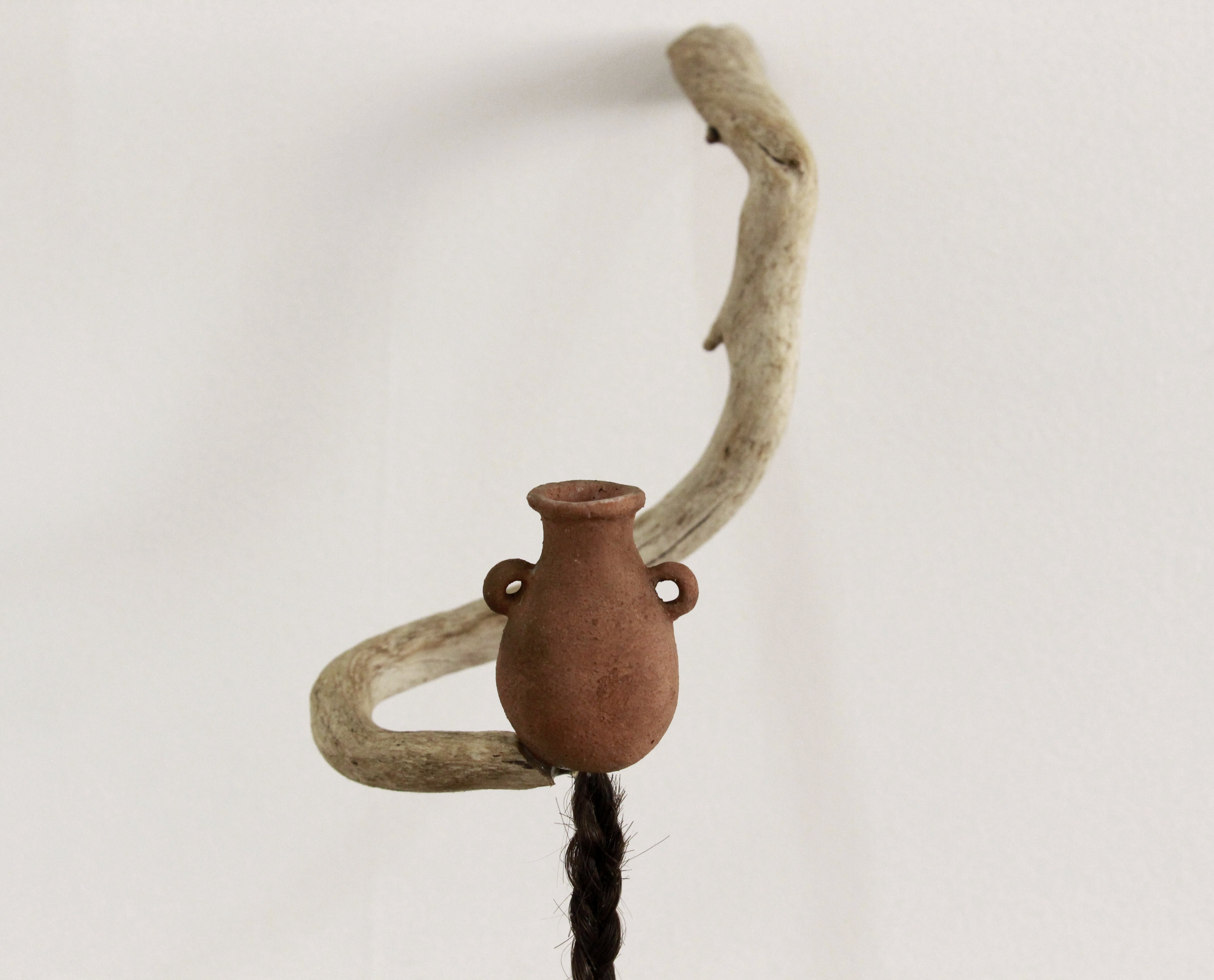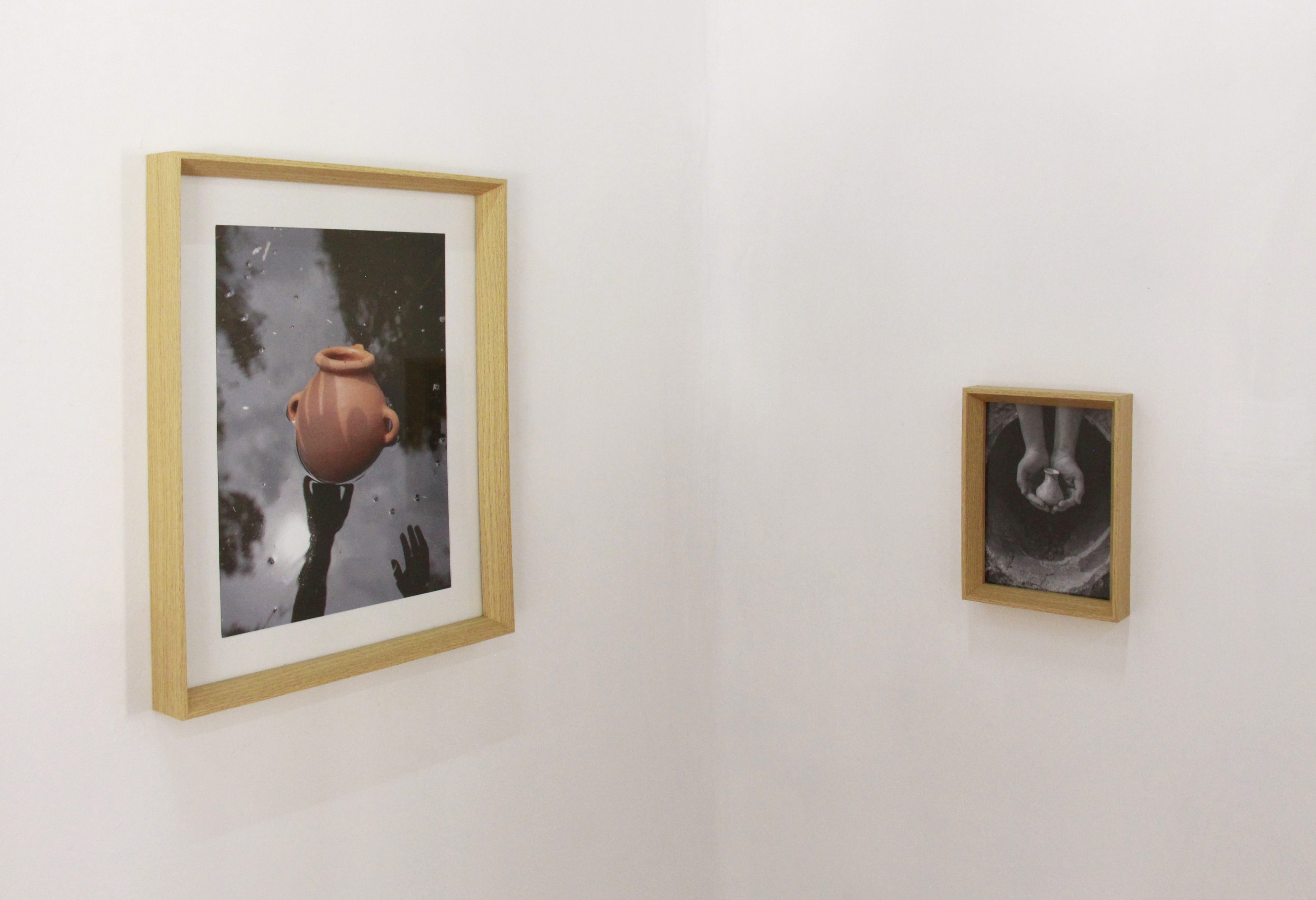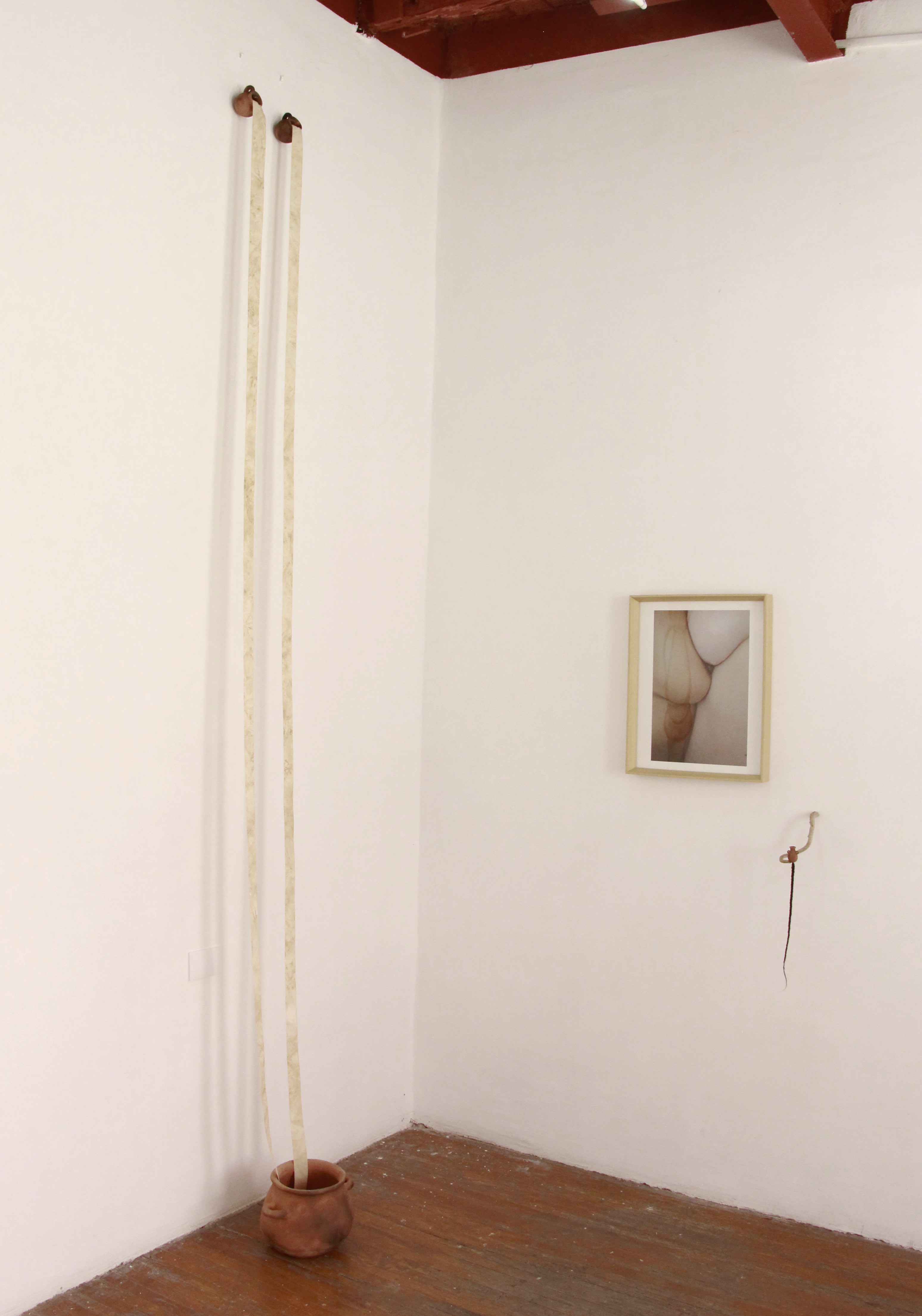
Review
Bea Millón. Y los cántaros, cantan: A reflection on living in and off the territory
by Marisol Noble
Reading time
5 min
Bea Millón's (1992) practice accompanies populations and communities living in territorial conflicts. Her projects critique the development models that have led to the ecological crisis, focusing on socio-environmental conflicts. Her work reflects on the relationships humans have with their territory and how these directly impact our bodies.
The recent exhibition at Salón Silicón is the result of a project that combines two recurring themes in the artist's work. On one hand, the idea that her works always start from harm, pain, or wounds: Y los cántaros, cantan [And the pitchers sing] originates from her own grief, a way to heal through sound and at the same time an effort to materialize a sonic memory, as her production always solidifies ideas into objects through sculptural formation.
On the other hand, Millón has been residing in Mexico City for seven years. She not only feels that she inhabits this territory, but she also recognizes that she lives off it, so this project also served as a ritual to give back to this place in gratitude for the benefits she has received.
Starting from this premise and with the idea of establishing dialogues with the landscape, since 2020, the artist set out to explore the bodies of water that surround and traverse Mexico City. She began by walking along Viaducto Piedad, the first river that, with urbanization proposals in the 1940s, was channelized to become a road. Even for those of us who were born and raised here, it is difficult to imagine that just over 500 years ago, the Valley of Mexico was a vast lacustrine system.

As part of her habitation in the city, Bea Millón traversed these wounded, contaminated, channelized, and mistreated bodies of water; she followed their courses and recognized traces of dispossession, violence, corruption, and death in them. How is it that a vital purifying resource can appear so corrupted, so putrefied, so close to death? It takes courage and responsibility to trace the ways in which one's presence in the territory affects it because ultimately, all inhabitants of this city are part of the water cycle and contribute in ways we may not be aware of to the decomposition of these bodies.
In this exhibition, the artist presented several pitchers, each made from a combination of clay and some mud she collected from the bodies of water she visited: the Tláhuac wetland, the Remedios River, the Magdalena River, and Lake Xochimilco. She collaborated with Nahum Landaverde Cruz, a musician and ceramist specializing in creating traditional indigenous clay instruments to produce these vessel-whistles in the Tlapitzalli workshop in the south of the city. She also worked with Ehécatl Emiliano Morales Valdemar, who assisted with the drifts and photographic shots.

Subsequently, Millón conducted a ritual in which she activated these clay instruments in front of the bodies of water. Some of these vessel-whistles function with liquid, which she took from the same river she was present in, while others she blew into with her own breath. Thus, she proposes that we connect with these aquifers through sound. She encourages us to call upon the current that flows within us, to converge and reverberate from our bodies and breath. The artist touches the bodies of water to honor them with these harmonious sounds. It is not in vain that pitchers are the ones singing to the water, as these vessels hold, preserve, and transport it, serving as a symbol of the care this resource needs.

Finally, to bridge the gap between the viewer and the pieces and to eliminate the usual untouchable condition of exhibited objects, the artist, with the support of Salón Silicón, Piaka Roela, Todxs lxs anteriores, and Jaime Lobato Cardoso, prepared a sonic improvisation for the inauguration, inviting the audience to take the pitchers and join the group. Bea and Jaime began by facing each other; she activated a whistle with her breath, and he, without an instrument, imitated the sound with his mouth. Then, each person took their seat and began to play.
At that moment, the musical aspect of Bea's work became evident. The clay instruments played by the group combined with the rhythmic sounds reverberating from the electronic consoles. This orchestra was joined by the singing of crickets, the noise of people, the movement of the street, the hustle and bustle of the city. At that point I wondered: if it were to rain, and we heard the sound of falling rain, the sound of a trickling stream, the tranquility of a lake, or the rushing of rivers, would there be difference between the sounds of a free-flowing river and a channelized one? How would the Magdalena River, burdened with so much waste, sound? What sounds would emanate from a drying canal in Xochimilco? Would the cry of the Remedios River be heard?
— Marisol Noble
Translated to English by Sebastián Antón-Ojeda
Published on September 23 2023